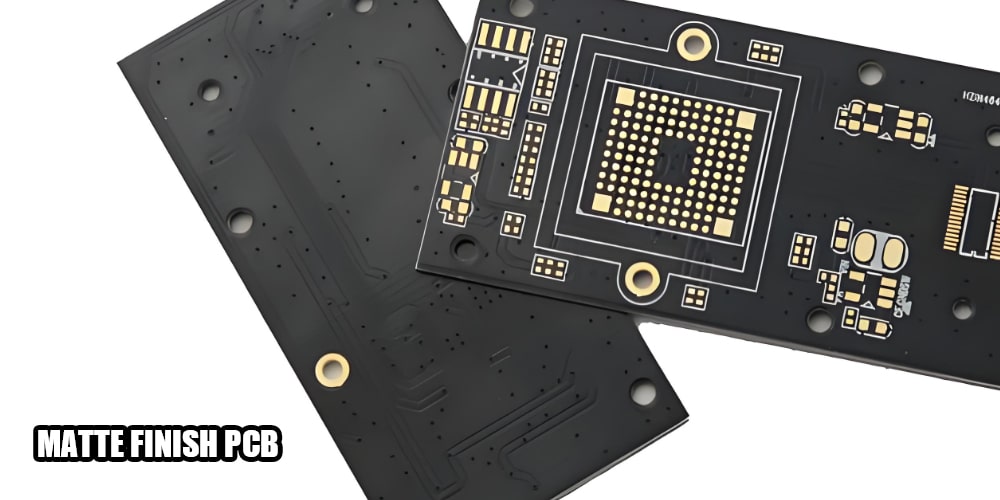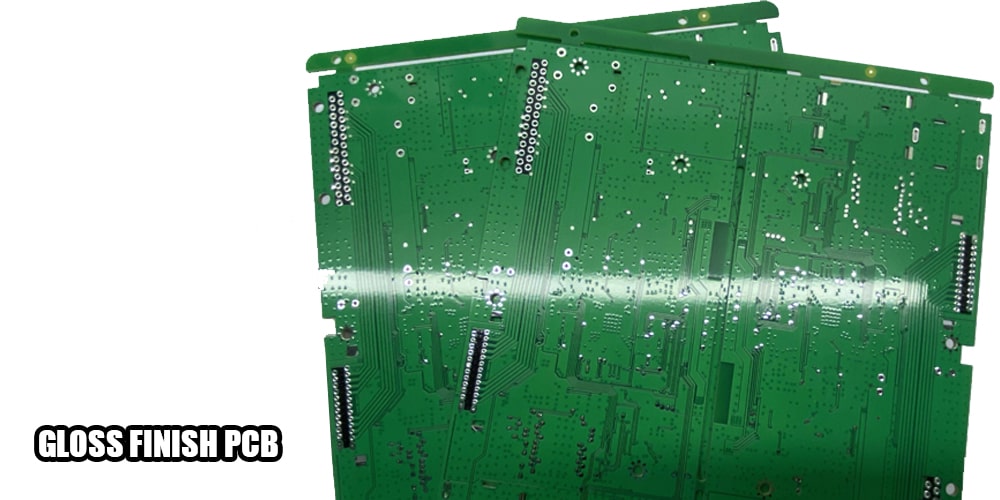Difference between Matte finish and Glossy finish PCB
20 January 2025
Views: 986
During the PCB manufacturing process, surface treatment can affect the appearance and performance of the PCB. Common ones are Matte finish PCB and Glossy finish PCB, so do you know the difference between them?
Matte finish PCB
Matte finish PCB adopts rolling process, and mechanical grinding makes the PCB surface produce isotropic micro-texture structure. The appearance is rough and not smooth, but it can effectively reduce the interference of reflection, scattering and ambient light, thereby reducing the light spot. Suitable for occasions that need to avoid light or reduce laser interference.

Features of Matte finish PCB
Matte finish PCB quality control is easy, and the repetition process is stable and reliable. However, the performance of the topcoat is greatly affected by the machining parameters.
The process is simple and fast, the cost is low, but the forming effect is poor. It is difficult to fully cover the fine fillet and other areas on the PCB surface.
Application of Matte finish PCB
It has good durability and corrosion resistance, and is often used in the field of industrial equipment.
Medical equipment requires precise optical inspection, and due to low reflectivity, it will not produce light spot effects.
Military aviation field requires high reliability welding and environmental adaptability.
Optoelectronic equipment and high-brightness display field that need to avoid light.
Applications in harsh environmental conditions.
The product focuses on welding strength and solder joint bonding.
Glossy finish PCB
The glossy PCB adopts electroplating coating process to make the PCB surface have uniform mirror gloss, smooth and beautiful appearance, but it is easy to produce reflection and light spot problems. Suitable for ornamental products and products that need a smooth and neat appearance.

Features of Glossy finish PCB
The initial quality of glossy PCB is easily affected by the environment and has poor repeatability, but the surface is more uniform and dense after molding, and the wear resistance is better.
The glossy surface process is difficult, the process is time-consuming and costly, but the molding quality is more stable and fine, and it is easy to cover the entire PCB surface.
Application of Glossy Finish PCB
Computer communication equipment, easy to clean and maintain.
Application of household appliances where cost is important.
No need to consider corrosion performance, environmental conditions are general.
The product appearance needs to be good-looking
The product process requirements are simple and the cost is acceptable.
Conclusion
In general, each has its own advantages and disadvantages. Choosing the right process according to your own needs can achieve better results in their respective fields.
Share This Story, Choose Your Platform!
















